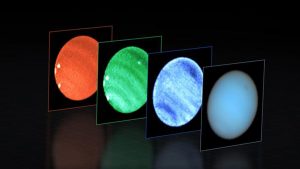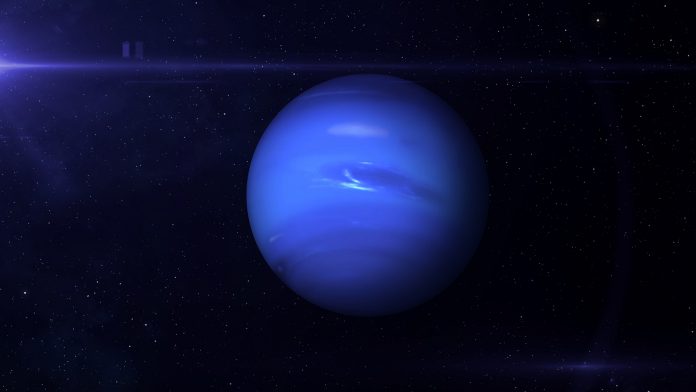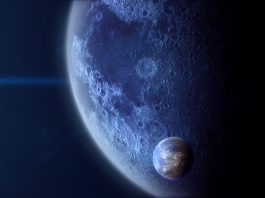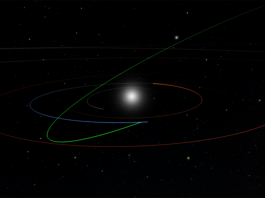Astronomers have observed Neptune’s dark spot using the ESO’s Very Large Telescope (VLT).
Neptune’s dark spot is the first example of any dark spot being observed using a telescope on Earth and the study even managed to spot a small bright spot located next to it.
These occasional features in the blue background of Neptune’s atmosphere are a mystery to astronomers, and the new results provide further clues as to their nature and origin.
The study, ‘Cloud Structure of Dark Spots and Storms in Neptune’s Atmosphere,’ is published in Nature Astronomy.
What are dark spots and why are they such a mystery?
Large spots are common features in the atmospheres of giant planets, the most famous being Jupiter’s Great Red Spot.
Neptune’s dark spot was first discovered by NASA’s Voyager 2 in 1989; however, it disappeared a few years later.
“Since the first discovery of a dark spot, I’ve always wondered what these short-lived and elusive dark features are,” explained Patrick Irwin, Professor at the University of Oxford in the UK and lead investigator of the study.
Irwin and his team used data from ESO’s VLT to rule out the possibility that dark spots are caused by a ‘clearing’ in the clouds.
Instead, the new observations indicate that dark spots are likely the result of air particles darkening in a layer below the main visible haze layer, as ice and haze mix in Neptune’s atmosphere.
This wasn’t an easy conclusion to reach, as Neptune’s dark spot is not a permanent feature of its atmosphere. This means that researchers have never been able to study them in enough detail before.
The researchers used an instrument that is suited to studying Neptune’s dark spot
This research opportunity came to light after the Hubble Space Telescope detected dark spots in Neptune’s atmosphere – including one in the northern hemisphere – in 2018.
Irwin and his team studied it from the ground with an instrument that is ideally suited to these mysterious and challenging observations.

Neptune’s dark spot observed through the MUSE instrument at ESO’s Very Large Telescope
Using the VLT’s Multi Unit Spectroscopic Explorer (MUSE), the team were able to split reflected sunlight from Neptune’s dark spot into its component colours and obtain a 3D spectrum.
This enabled them to study the spot in more detail than ever before, which excited the team.
Irwin said: “I’m absolutely thrilled to have been able to not only make the first detection of a dark spot from the ground, but also record for the very first time a reflection spectrum of such a feature.”
The instrument also uncovered some surprising results
Not only did they observe Neptune’s dark spot, the observations also revealed a surprise result.
“In the process, we discovered a rare deep bright cloud type that had never been identified before, even from space,” said Michael Wong, the study’s co-author.
This rare cloud type appeared as a bright spot right beside the larger main dark spot, the VLT data showing that the new ‘deep bright cloud’ was at the same level in the atmosphere as the main dark spot. This means it is a completely new type of feature compared to the small ‘companion’ clouds of high-altitude methane ice that have been previously observed.
With the help of the MUSE instrument, it’s now possible for astronomers to study features like these spots from Earth.









